Overview:
The Mist™ platform Access Assurance service provides secure wired and wireless network access control based on user and device identities. The service enforces zero-trust network access policies for guest, IoT, BYOD, and corporate devices. Cloud-hosted, microservices-based authentication eases IT operations by delivering a full suite of access controls within a flexible yet simple authorization policy framework.
Access Assurance extends the Mist™ platform IoT Assurance, which simplifies the onboarding of headless IoT and BYOD devices, to wired and wireless business devices using 802.1X authentication or MAC Authentication Bypass (MAB) methods for non-802.1X clients.
Key Features
- Client-first experience
- Granular identity fingerprinting
- Network policy enforcement
- High availability and geo-affinity
- Single-pane-of-glass management
- Automatic software updates
- API-driven architecture
Product Description
the Mist™ platform Access Assurance is a microservices-based, cloud network access control (NAC) service that enables enterprises to easily enforce a zero-trust security model. Access Assurance solves many complexity challenges associated with traditional NAC offerings, by removing on-premises server hardware, providing inherent service high-availability, resilience, as well as automatic at-run-time feature updates, security, and vulnerability fixes. Extending the Mist™ platform IoT Assurance capabilities, which simplifies on-boarding for headless IoT and BYOD devices, Access Assurance extends support to onboard wired and wireless devices with 802.1X authentication or MAC Authentication Bypass (MAB) methods for non-802.1X devices.
Access Assurance uses hundreds of different vectors to match the identity of the user and the device, such as X.509 certificate attributes, user group memberships, device compliance metrics, as well as location context. These vectors help determine identity-based network admission criteria, such as the network segment or a microsegment a device should connect to and the network policy that should be dynamically applied to a user.
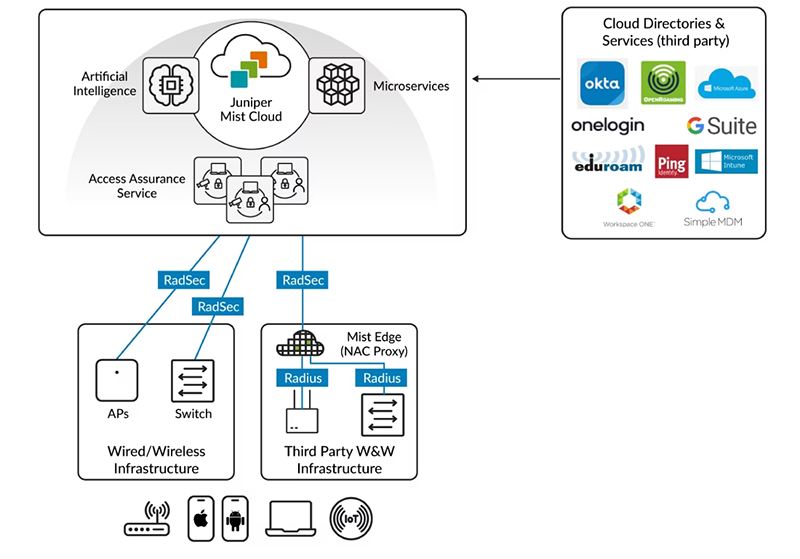
Figure 1: the Mist™ platform Access Assurance cloud service greatly simplifies network access control.
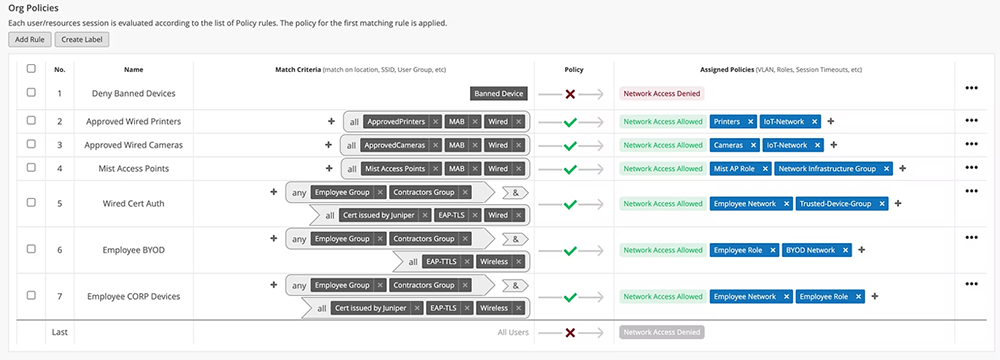
Figure 2: The flexible policy creation interface helps admins assign policies based on business requirements.
Most importantly, Access Assurance provides end-to-end connectivity troubleshooting in a unified view from the client, network infrastructure, and access control perspective, dramatically simplifying Day 2 support. IT admins gain a cohesive view of the end-user experience and can determine whether poor experiences are due to client configuration, network infrastructure, authentication, or a service.

Figure 3: Client SLE tracks network access control events.
Architecture and Key Components:
Access Assurance is delivered through the Mist™ platform cloud and powered by Mist AI. The microservices architecture ties together high availability, redundancy, and autoscaling for optimal network access across wired, Wi-Fi, and wide area networks. Using geo-awareness, Access Assurance automatically redirects authentication requests from different regions to the nearest Access Assurance instance to provide minimal latency and best end-user experience.
Access Assurance provides an authentication service by integrating external directory services like Google Workspace, Microsoft Azure AD, Okta Identity, and others. It also integrates external Public Key Infrastructure (PKI) and Mobile Device Management (MDM) providers such as Jamf, Microsoft Intune, and others to provide granular user and device identification to enforce identity-based, zero-trust network access control.
Features and Benefits:
Client Experience-First
Access Assurance provides a unified view of the client connectivity experience and can easily identify a problem and perform root cause analysis. All client events including connection and authentication successes and failures are captured by the Mist™ platform cloud. With this data, the Mist™ platform cloud helps simplify day-to-day operations by easily identifying if an end-user connectivity issue is caused by a client configuration mistake, network infrastructure and service problems, or authentication policy configuration issues. The Mist™ platform service level expectations (SLEs) for wired and wireless clients are enhanced to include network access events, such as authentication events, certificate validations, and more.
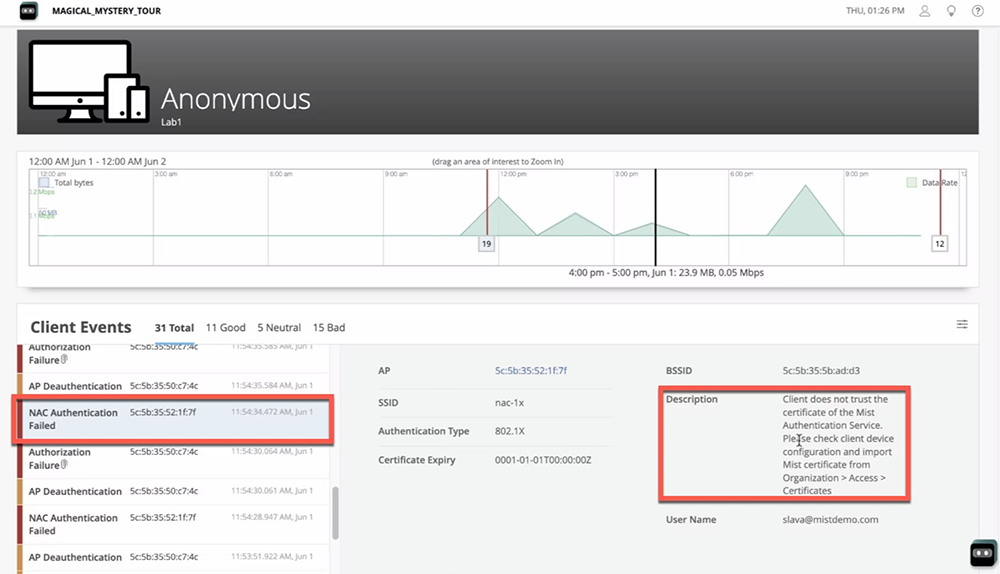
Single Pane of Glass for Management and Operations
Access Assurance is tightly integrated with the Mist™ platform cloud providing full-stack management and day-to-day operations for Wi-Fi Assurance, Wired Assurance, SD-WAN Assurance, and Access Assurance in one dashboard for end-to-end visibility. The Marvis AI engine leverages data from multiple sources for anomaly detection to provide actionable metrics. Through the dashboard, users can:
- create and apply access policies that ensure only authorized devices and users are allowed network access
- assign users and devices to the correct network segment
- prevent users and devices from accessing restricted resources
- add and modify certificates and certificate authorities
- configure identity providers
- monitor client activity across the organization
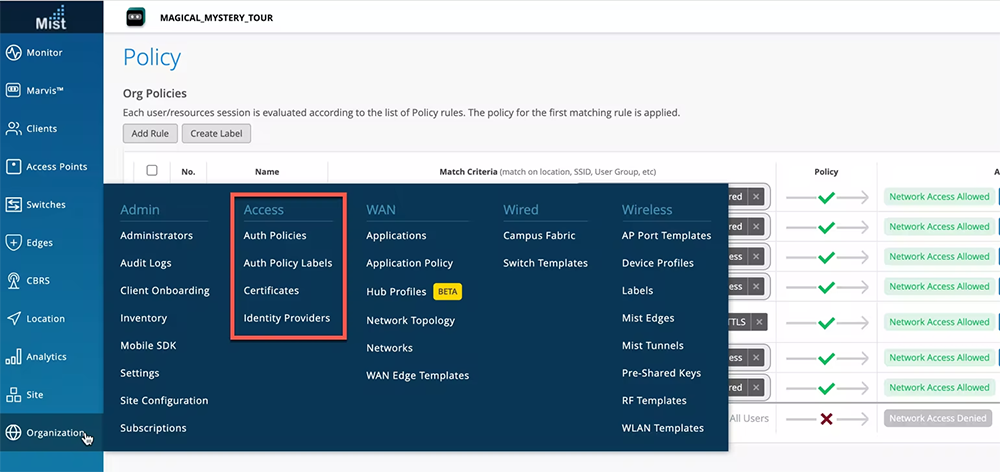
Granular User and Device Identity
Access Assurance is capable of granular identity fingerprinting based on X.509 certificate attributes. It also uses intrusion, detection, and prevention (IDP) information like group membership, user account state, MDM compliance state, client lists, and user location for fingerprinting. The resulting user and device fingerprint provides an identity vector for accurate policy assignment within the zero-trust principles.
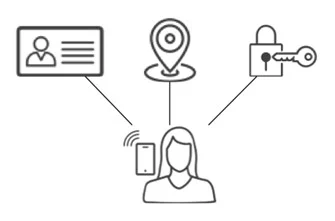
Network Policy Enforcement and Microsegmentation
Based on user and device identity, Access Assurance can instruct the network to assign a user to a specific network segment (VLAN or a group-based policy tag), as well as enforce network policy by assigning a user role. Such roles can be leveraged in The Mist™ platform WxLAN policy framework or switch policies.

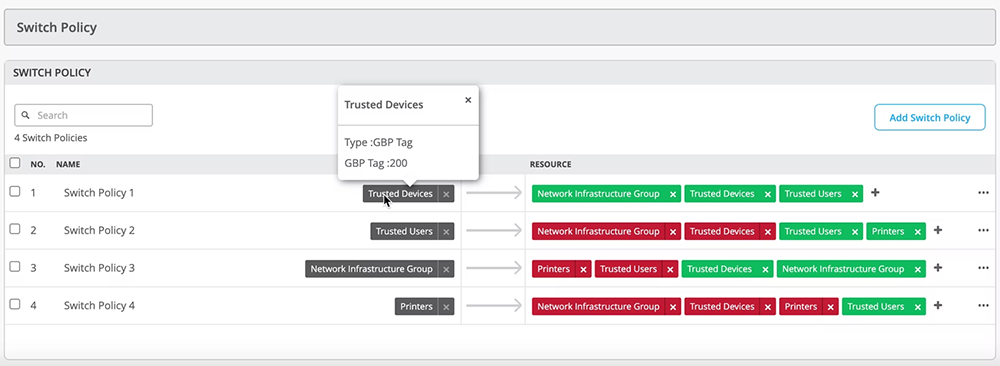
Built-in High Availability and Geo-Affinity
With Access Assurance, organizations gain reliable and low-latency network access control of their networks in single and multisite deployments. Juniper has deployed cloud instances of its network access control cloud service in multiple regional locations. In multisite deployments, authentication traffic coming from the network infrastructure is automatically directed to the nearest Access Assurance instance. Latency is minimized and users enjoy an exceptional wireless experience. This automated process is fully transparent to users and requires no involvement from the IT team. Organizations are assured reliable, redundant network access for client devices regardless of the state of the nearest regional instance.
Automatic Feature and Security Updates
The Mist™ platform microservices-based cloud architecture keeps Access Assurance optimized with the most advanced technologies. New features, security patches, and updates are automatically added to Access Assurance on a bi-weekly basis without interruptions or service downtime. This capability dramatically simplifies and improves service operations for network IT administrators, eliminating lengthy software upgrades and service downtime. Juniper can easily deploy new features and functions to its cloud-based services, bringing advancements to market more rapidly and continuously improving your client-to-cloud experience.
Extending the Mist™ platform IoT Assurance with Access Assurance
Access Assurance is coupled with the Mist™ platform IoT Assurance to build out controls for onboarding and management of corporate devices with 802.1X authentication well as MAC-less onboarding of non-802.1X IoT and BYOD devices. IoT Assurance simplifies IT operations and secures connections for headless IoT and BYOD devices via a Multiple Pre-Shared Key (MPSK) mechanism. It incorporates a full suite of access control functionality leveraging MPSK or Private Pre-Shared Key (PPSK) as a new type of identity and policy vector.
IoT Assurance also provides PSK Portal creation enabling BYOD onboarding workflows by automating PSK generation based on user identity, leveraging Security Assertion Markup Language (SAML) for an SSO experience. It enables seamless client device onboarding via mobile QR code or by typing a personalized passphrase without installing any client software.
Marvis Virtual Network Assistant
Marvis Virtual Network Assistant uses Mist AI to help IT teams interact and engage with their networks. The Marvis AI engine binds together Access Assurance with other the Mist™ platform cloud-based services, such as Wired Assurance, Wi-Fi Assurance, and WAN Assurance, helping the operations team move closer to achieving The Self-Driving Network with simplified troubleshooting and performance analysis.
Using features powered by Mist AI, helpdesk staff and network administrators can simply ask a question in natural language and get actionable insights using Marvis Conversational Interface that help them identify and solve network issues. Marvis brings proactive anomaly detection into the SLE dashboard. With Marvis Actions, staff gain proactive, actionable insights to identify network access issues across the full stack, providing recommendations for user connectivity issues. This provides our customers easy root cause analysis across the full network stack and authentication services.
API-Driven Architecture
Access Assurance service is 100% based on public Representational State Transfer (REST) APIs that allow easy integration with external security information and event management (SIEM) or IT service management systems or other platforms for both configuration and policy assignment. These APIs provide the capability to invoke actions based on user or external events, as well as for using the cloud-native Webhook framework. Overall, The Mist™ platform™ platform is 100% programmable, using open APIs, for full automation and seamless integration with complementary Juniper access, wired, wireless, WAN, security, user engagement, and asset location solutions.
Specifications:
| Feature |
Description |
| X.509 certificate management |
External PKI support
Automatic CRL/OSCP certificate revocation check |
| External identity provider integration |
The following protocols are supported to integrate into any identity provider to do user lookup and get device state information:
- Secure Lightweight Directory Access Protocol (LDAP)
- OAuth2
- RADIUS over TLS (RadSec) client
|
| 802.1X Authentication Methods |
The following EAP methods are supported for secured 802.1X access:
- Extensible Authentication Protocol-Transport Layer Security (EAP-TLS)
- Protected Extensible Authentication Protocol PEAP TLS Tunnel
- Extensible Authentication Protocol (TEAP) (TLS/TLS) Extensible Authentication Protocol-Tunneled TLS (EAP-TTLS (PAP)
|
| Non-802.1X authentication methods |
MAC Authentication Bypass (MAB)
Multi Pre-Shared Key (MPSK) |
| Network policy and microsegmentation |
Assign VLANs, role and group-based policy tags dynamically based on the user identity |
| Third-party network infrastructure support |
Supported via Mist Edge Auth Proxy application, third-party vendor devices can communicate over standard RADIUS to the Mist Edge Auth Proxy |
the Mist™ platform IoT Assurance
(Included with Access Assurance subscription) |
IoT and BYOD client-device onboarding
- Create, rotate, auto-expire PSKs and MPSKs
- Dynamic traffic engineering
- Key-based WxLAN policy
- Personal WLAN creation and management
- Active device usage tracking per PSK
- Automated key provisioning and rotation
|
Frequently Asked Questions:
Who should deploy the Mist™ platform Access Assurance?
The Mist™ platform Access Assurance cloud service is essential for organizations of all types and sizes that want to protect their network and data from unauthorized access. Any business or institution with a network of multiple users and devices, such as employees, guests, contractors, and IoT devices, can benefit by using Access Assurance to help improve its security posture.
What are the primary functions of Access Assurance?
The cloud-native service controls who can access your network using a zero-trust approach, enforces security policies, and helps guard against malware and other security threats. You can also use it to ensure compliance with regulatory requirements and improve overall network visibility and control.
What unique advantages does the Mist™ platform Access Assurance provide?
Access Assurance offers numerous features that help enterprises tighten network and data security:
- Secure network access control for guest, IoT, BYOD, and corporate devices based on user and device identities. These capabilities are delivered using 802.1X authentication or, for non-802.1X devices, the MAC Authentication Bypass (MAB) protocol.
- A microservices-based cloud architecture for maximum agility, scalability, and performance. Regional service instances minimize latency for enhanced user experiences.
- 100% programmability. The service supports open APIs for full automation and seamless integration with external SIEM and ITSM systems for both configuration and policy assignment.
- Visibility into end-to-end user connectivity and experience levels across the network stack.
- Optimized Day 0/1/2 operations through a unified IT management experience across the full network stack, including wired and wireless LAN access.
How are the Mist™ platform Access Assurance and the Mist™ platform IoT Assurance related?
Access Assurance builds on IoT Assurance to deliver unified controls for the 802.1X authentication-based onboarding and management of corporate devices and the MAC-less onboarding of non-802.1X IoT and BYOD devices.
What network devices and connections does the Mist™ platform Access Assurance support?
Access Assurance works with a diverse range of both wired and wireless LAN-connected devices and enables administrators to bring them into compliance. Among them:
- Traditionally managed devices, such as corporate-owned laptops, tablets, and smartphones
- Unattended IoT and other M2M devices
- Manageable but traditionally unmanaged devices, such as user-owned computers and phones (BYOD)
- Shadow IT devices
- Guest devices
How does the Mist™ platform Access Assurance differ from traditional network access control (NAC)?
Network access control (NAC) is a decades-old security technology for network device onboarding and policy management. However, traditional NAC suffers from architectural challenges. For example, the explosion of different unattended device types, complexities of disaggregated networks, and on-premises NAC implementations expose ever-increasing risks and vulnerabilities.
The Access Assurance cloud-native solution solves these problems by verifying the following information before allowing a device to connect:
- Who is trying to connect, determined using identity fingerprinting and user context
- Where the connection is originating, such as a specific site or VLAN
- What permissions and other access policies are associated with the user and the device attempting to connect
- How the user/device is attempting to establish access; what type of network connection they are using
What is 802.1X authentication?
802.1X is an Ethernet LAN authentication protocol used to provide secure access to a computer network. It’s a standard defined by the Institute of Electrical and Electronics Engineers (IEEE) for port-based network access control. As such, its main purpose is to verify that a device attempting to connect to the network is actually what it claims to be. 802.1X is commonly used in enterprise networks to protect against unauthorized access, enforce security policies, and make sure that data transmitted over the network is secure.
What is MAC Authentication Bypass (MAB)?
MAB is a network access control protocol that bases a grant or deny decision exclusively on the endpoint’s media access control (MAC) address. It’s often used within the context of a larger, standard 802.1X authentication framework for the subset of devices that don’t support 802.1X client, or supplicant, software, such as M2M/IoT and BYOD devices.

![]()








